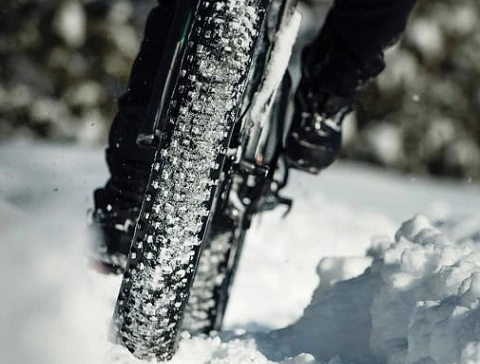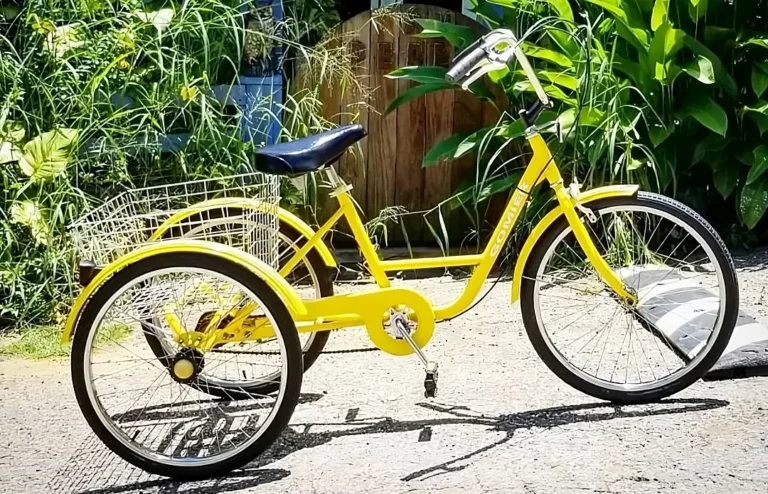How to Prepare Your Bike For Winter?

How to prepare your bike for winter? With the onset of winter, dry roads, and expecting to return home from a ride without being covered in mud and grit is highly unlikely. There’s also the issue of limited daylight, frost, and of course the possibility of snow.
Ultimately, these elements are the perfect recipe for wear on your bike and bike components.
The good news is that by implementing a few tips and tricks, you will have your bike winter-ready in no time at all.
Cold, rainy, and windy conditions and slick roads riddled with debris will make winter a dreadful season in the saddle. But it doesn’t have to be that way.
How to Prepare Your Bike For Winter?
Here’s what you can do to ensure you’re well-equipped to travel through the winter.
How cold is too cold to ride a bike?
For some riders, riding a bike at temperatures below 50 degrees air temperature is quite cold.
While some riders believe that riding should cease when temperatures hit below 20 – 25 degrees F, others are motivated to bundle up and keep on moving. So it is basically a matter of whether or not you feel comfortable riding in cold or low temperatures.
Additionally, ice, snow, and grit tend to build up rather quickly on drivetrains during the winter, while suspension systems become sluggish under very cold temperatures.
So lots of individuals prefer using their older bikes to ride in winter since they have fewer gears and shocks.
Air Temperature vs. Ground Temperature
Monitoring the air temperature and the ground temperature during the winter months is critical if you intend to ride your bike. Both can be harmful for many reasons and should not be taken for granted.
Riding your bike in below-freezing temperatures can be potentially dangerous, especially if you are not equipped with the proper gear. Since our bodies have a natural internal temperature, when it drops, hypothermia can set in quickly.
When you travel down the road in freezing air, the air keeps sucking heat out of your body at a quicker pace than your body can generate. So the internal temperature begins to get lower and lower.
It’s also necessary to check the temperature of the ground before you go out for a trip. If ice or snow is lying somewhere on the lane, it’s not advisable to ride your bike on the sidewalks. The media is full of horror stories about bike riders losing control on slippery roads and being struck by other cars.
In certain parts of the country, the most dangerous aspect of riding in winter is a condition called “black ice.” It happens when the temperature falls below zero for weeks at a time, and the ice on the road is becoming more and more compact.
Is it safe to ride a bike in the winter?
Winter riding can be tough on bikes even with many committed bikers. It can also make cycling quite risky.
For those of us who treat outdoor exercises with mixed feelings, having snow covering the field is a perfect opportunity to find some other way to get somewhere. But still, in neighborhoods where riding is popular, bike lanes remain busy even though the snow piles up.
Here are a few safety tips for riding your bike in winter conditions:
Lower your saddle
Trying to reduce your force of gravity is sure to make your bike less shaky, a minor improvement that will make it much easier to navigate icy spots.
The lower saddle often makes it easy to handle any threat of skidding, so you can use your legs to keep the bike upright. “If your feet can remain flat down on the ground, you will be much more balanced and less prone to slip.”
Let some air out of your tires
When riding in icy, snowy, or wet conditions, you don’t want your tires pumped up as much. This is because lower tire pressure is required to conform to irregular surfaces.
That could well be a bit too much for most of those who are generally comfortable with a regular or fat tire. Icy weather may very well be a warning to leave your slim racer at home.
Watch out for black ice
While there’s always the possibility of all sorts of rubble being trapped under the snow, one potential danger that should be avoided at all costs is black ice. That said, it’s hard to detect in advance, so try to avoid gutters, drains, and areas under bridges, where water has built up and frozen over.
It is also best to cycle a little away from the pavement to avoid snowbanks. Also, take note that most road surfaces that sparkle are likely to be slippery.
Get out your winter gloves
Although everybody gears up when the temperature decreases, the added comfort and flexibility of warm winter gloves make the entire winter cycling experience worth your while.
Winter gloves have sweat-wicking properties that also keep the wind, rain, and freezing cold out. However, the fabric is still stretchable allowing you to adequately feel the shifters and brakes.
How do I prepare my bike for winter?
Winter hits every year, but it always shocks people. Not covering up your bike, or yourself, will end up in a washed-out party and have your legs feeling worn out.
Follow these guidelines and suggestions on how to ready your bike for the winter:
Fit some mudguards
A full-length package of mudguards is going to fit best, protecting you and your gear from excess wear.
Swap your tires for wider and more puncture-resistant models.
They are not too big, and you can still get equal amounts of joy with them fitted. They come in a wide variety and you’ll be able to go into the toughest winter weather.
Get some lights
Although you should not intend to stay out until dark during the winter months
It’s bright enough to be used as a daylight running light that’s ideal for nights or even cycling in the low winter sunlight.
Stay on top of cleaning
The grim conditions will enable your bike to collect dirt faster. It means that it’s necessary to clean it daily. Salt from the road can be a specific killer, so with any wet trip, aim to at least give it a swift hose down, or treatment with a water-dispersing spray, and a chain re-lube.
It will make it all last longer and stop corrosion. A beautifully polished bike will still be more prone to mud the next time it’s ridden.
Winter bike tires
As the only point of contact between you and the ground, your tires are essential aspects of your bike. But since road bike tires usually all look so alike, it’s not always easy to see the difference between a working tire and a bad tire in a store.
Also, changing your bike’s storage tires to something different, either in terms of increased volume, reduced rolling resistance, enhanced cornering grip, or simply enhanced puncture protection, will change your riding experience.
What’s nice is that similar to other bike parts, having the right road bike tires doesn’t have to cost the world. However, the options pertaining to road bike tires available on the market could be a little surprising.
Types of road bike tires
The three most common types of bike tires on the market today are clinchers, tubeless and tubular tires.
Clincher tires, which provide an open case without an inner tube, are the most popular type in the marketplace. They are mounted on traditional hooked tire rims.
Tubeless tires have a similar open casing structure to clincher tires but, as the name suggests, can be used with no inner tubes on customized built, tubeless-compatible tires.
Tubular tires use a tubular casing, which is welded and closed along with the inner tube tire. The tire is glued to a tubular-specific rim that does not have support beams or bead loops with protection.
Conclusion
Snow, black ice, downpours, and the darkness in winter riding can be a struggle, and it can be incredible.
With bike preparation and the right clothing, even cold days will feel relaxed and workable.

Steve Beck is a passionate cyclist and experienced writer covering the cycling industry for over a decade. He has a wealth of knowledge and expertise in all bike-related things, from the latest products and technologies to the best routes and trails. His articles are well-researched, informative, and engaging, and he has a talent for explaining complex cycling concepts in a way that is easy to understand. Steve can be found on the road when he’s not writing about bikes, putting his knowledge and skills to the test.







![Should I Buy a Bike from Walmart? [Interesting Answer]](https://bikesmarts.com/wp-content/uploads/2021/04/should-i-buy-a-bike-from-walmart-768x432.webp)


